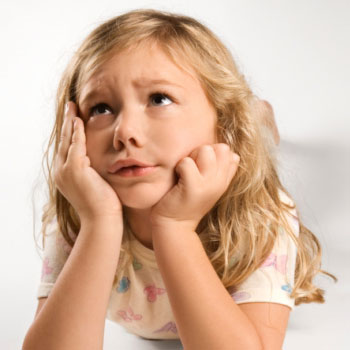Anxiety in Children

It seems like kids lead a carefree life full of play and devoid of the worries we face as adults. But anxiety is on the rise in kids, whether it’s generalized, social or panic attacks. There are a lot of time constraints put on kids these days. Their school days are ruled by structure and not much time blowing off steam outside anymore. Then after-school activities like dance, sports, musical instruction or other extracurriculars, plus homework, add up to not a lot of free time. Even summer is jam-packed with vacations, camps and other activities. No wonder kids are stressed. Some of the signs of anxiety in kids are easy to recognize and can manifest themselves physically – frequent headaches, stomachaches and sleep changes can be signs that a child is anxious. Compulsive or dangerous behavior such as cutting, drug abuse, nail biting or hair pulling may signal anxiety. Moodiness, self-criticism, need for reassurance and anger are psychological changes that could indicate anxiety. These symptoms, particularly the physical ones, are telltale signs of anxiety and not just a desire to avoid school. Talk to kids to get to the bottom of the source of anxiety, whether it’s bullies, teachers, peer pressure, pressure to perform at a certain ability level or something else. Help children prepare for a new routine by giving them plenty of notice and a clear idea of what to expect. For example, a preschooler will enjoy touring a new school with mom and dad, while meeting new friends and teachers. Arranging playdates with new classmates can ensure that your child knows he’ll have a friend when he gets to school. Examine your child’s schedule and note when he complains. Is it after school? If so, then it may be time to take an activity or two off the schedule. Maybe he’s feeling overscheduled and pressured to finish homework in a narrow window of time between activities at night. Help your child prioritize what he should worry about, and you may find he worries less!

